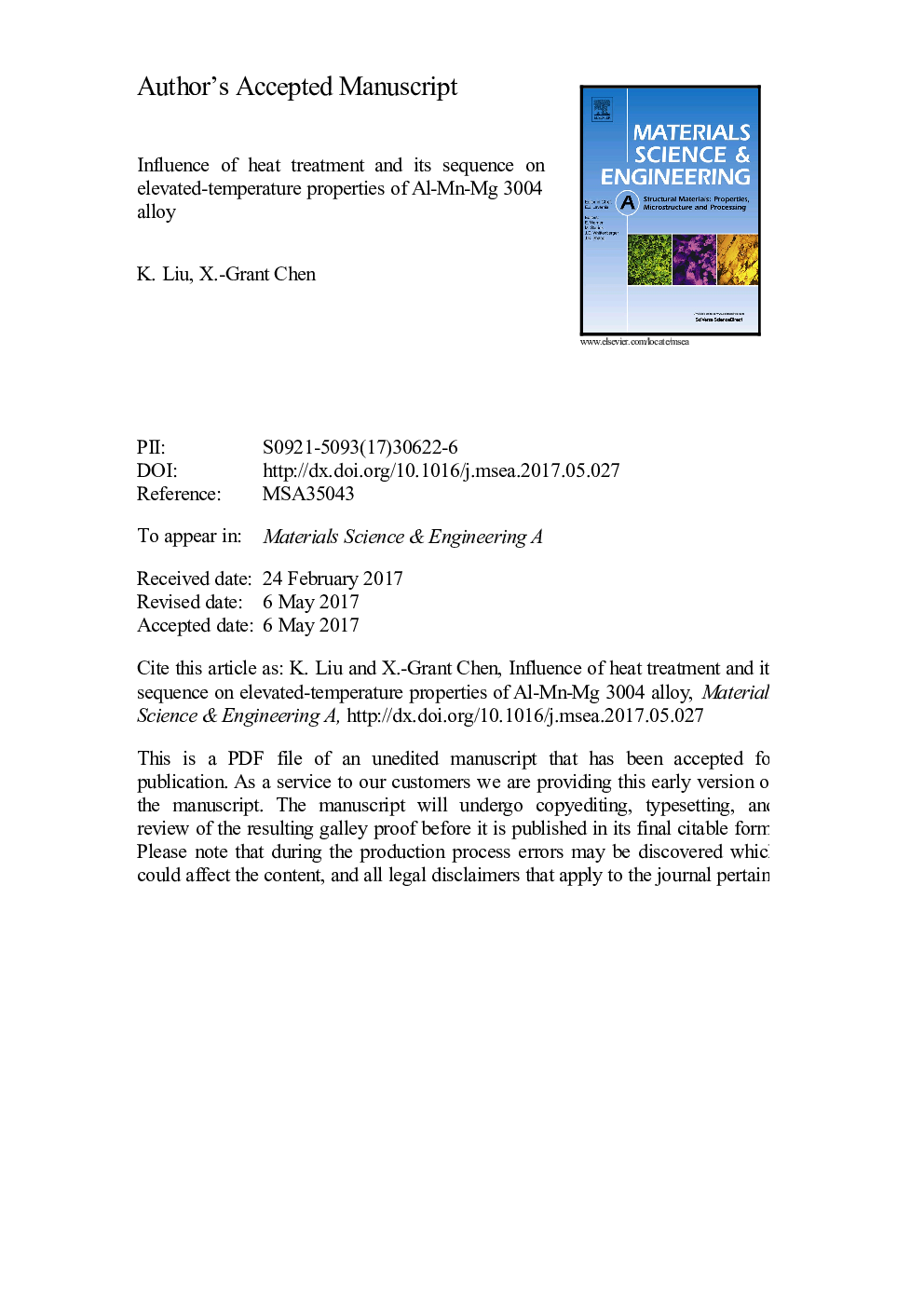| Article ID | Journal | Published Year | Pages | File Type |
|---|---|---|---|---|
| 5455760 | Materials Science and Engineering: A | 2017 | 16 Pages |
Abstract
Various heat treatments with different sequences between the peak precipitation treatment (375 °C/48 h, referred to as “P”) and the high temperature treatment (450-600 °C, referred to as “H”) were performed in Al-Mn-Mg 3004 alloys to simulate their thermal treatments during thermomechanical fabrication processes in the present work. Their influences on the dispersoid precipitation and elevated-temperature properties (yield strength and creep resistance at 300 °C) were investigated. The results indicate that the size of dispersoids increased while the volume fraction of dispersoids decreased with increasing “H” temperature when “P” was performed either prior to or after “H” (denoted as “PH” and “HP”, respectively), which results in the reduction of the elevated-temperature properties. However, the yield strength and creep resistance after “PH” treatments were always higher than those after “HP” treatments at the same “H” temperature. When the “H” temperature during “PH” treatments is controlled below 500 °C, the materials can still maintain the appropriate yield strength and creep resistance, providing the possibility for Al-Mn-Mg 3004 alloy to adapt to the conventional fabrication processes but still maintain high elevated-temperature properties.
Keywords
Related Topics
Physical Sciences and Engineering
Materials Science
Materials Science (General)
Authors
K. Liu, X.-Grant Chen,
